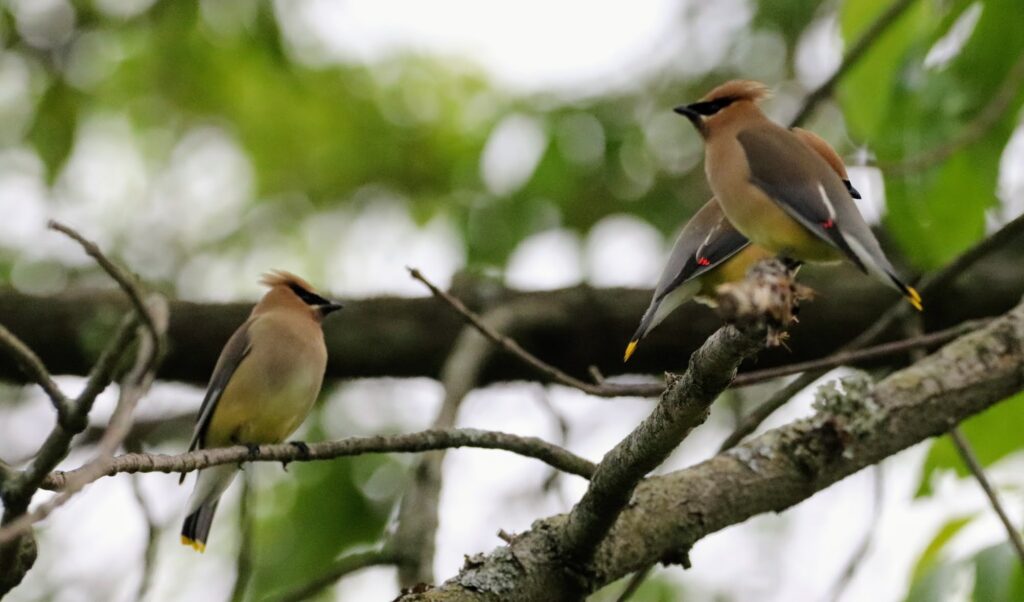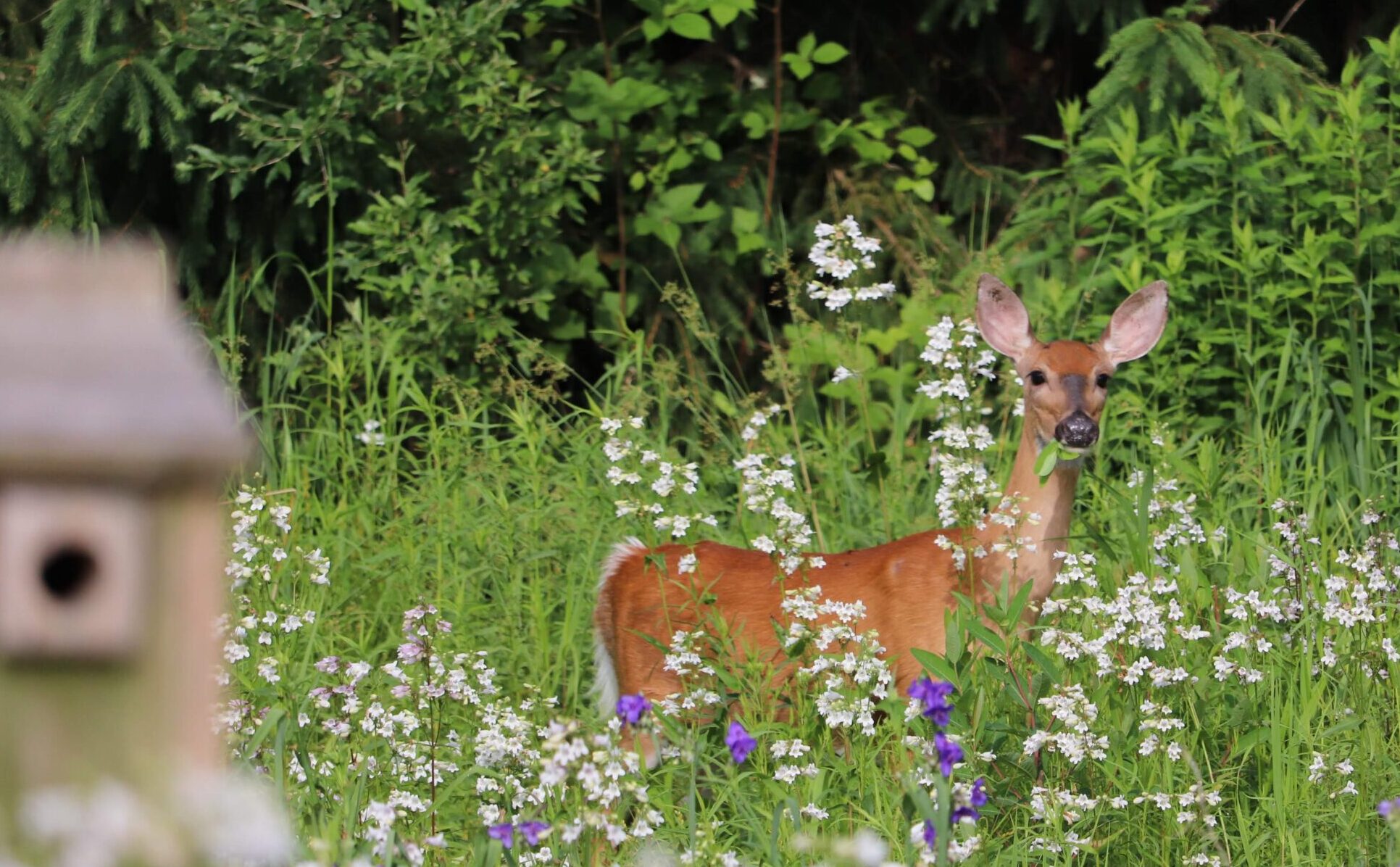After the spring emergence, the bounty of flowers takes off
JUNE
Getting to Know the Natives In Your Backyard, A Month at a Time
The majority of the plants, trees and shrubs around Flutter By Meadows are native. However, we did leave some plants in the beds that were here when we bought the house. Mostly because they provide good ground cover, or because they fit the space and were not invasive. As such, we have a few hostas sprinkled about and some lovely tulips. And the deer love those hostas. But they don’t eat everything in sight. And thank heavens for that. They sample, and taste things for sure. They often walk through our meadow…but their isn’t much in there that they like. But we have yet to have an entire native planting be wrecked by a deer. But just about every year, they do wreck the hostas. It’s a battle.
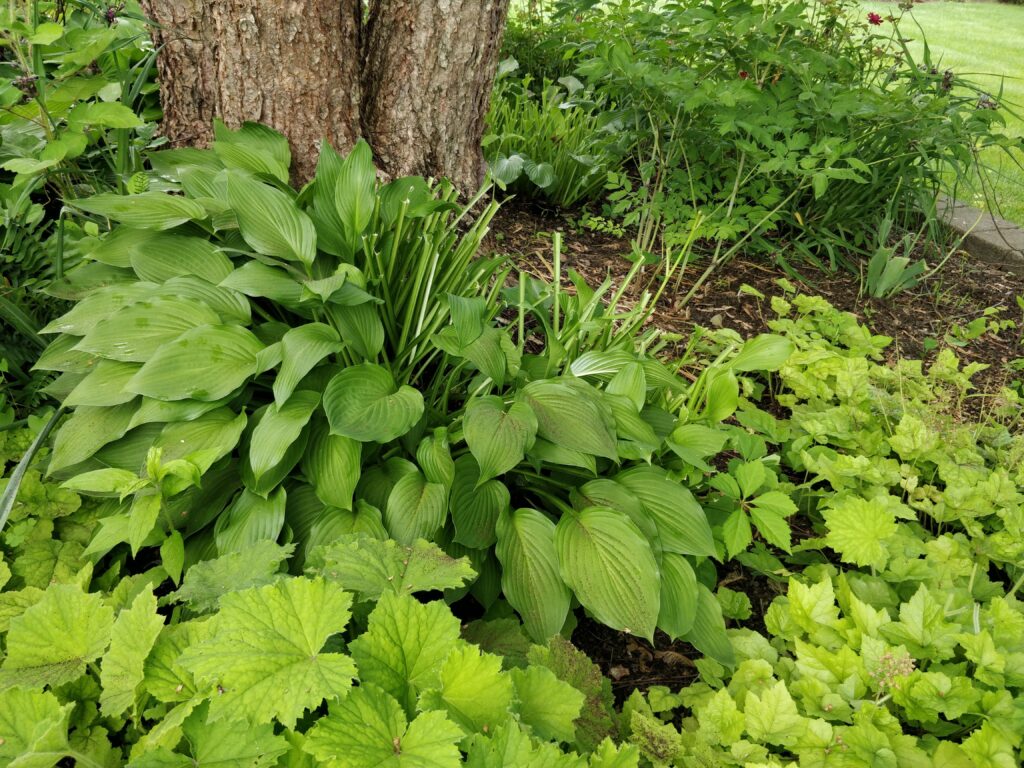
While they eat the hostas, they leave the surrounding native plants alone! How about that! You can see in the picture here, the heavily browsed hostas. Yet, note that the alum root or Heuchera villosa ‘Autumn Bride’ and the Foam Flower (Tiarella cordifolia), and the Black Cohosh (Actaea racemosa) are left undisturbed. At some point we will probably rip out the hostas, and let the foam flower spread as ground cover to their heart’s delight.
Yet another nod to the beauty of native plants!
I almost didn’t have enough space for all the plants that are soon to bloom right now. There are buds everywhere getting ready to burst. And hooray for that too, because soon enough the swallowtails and monarchs will be milling around in the heat of the day.
“In June, as many as a dozen species may burst their buds on a single day. No man can heed all of these anniversaries; no man can ignore all of them.”
– Aldo Leopold

There is also of course a ton of bird activity happening too as tiny beaks are starving for attention and hoping for a free meal. At Flutter By Meadows, June is the time of year we see the Cedar Waxwings and the Gray Catbirds vying for berries. The delicious ripe berry of the serviceberry tree in our front yard is like a bird buffet, or better yet, a drive-through with Apple Pay or E-ZPass.
It is lovely small tree that provides delicate white flowers in the spring, berries in early summer for the gregarious Cedar Waxwings and stunning red foliage in the fall. There are several varieties of the tree, and almost as many common names, but the variety we planted is the Amelanchier canadensis. They are a favorite for Mockingbirds and Robins as well.

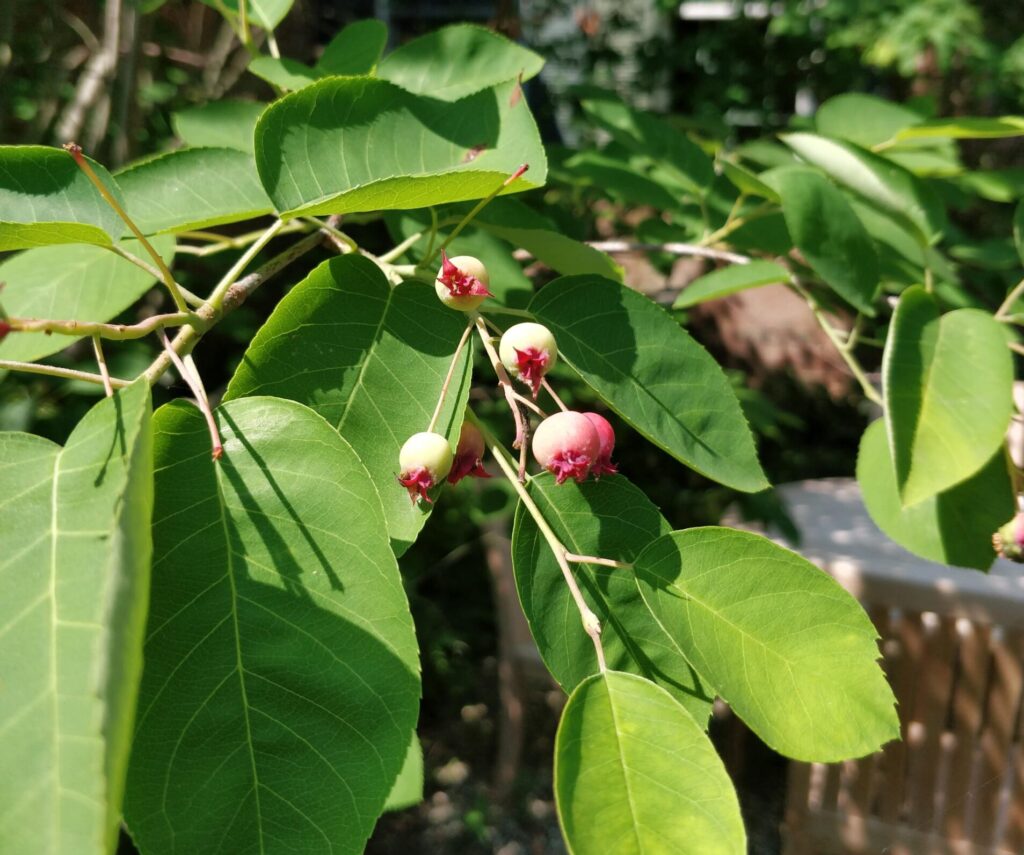
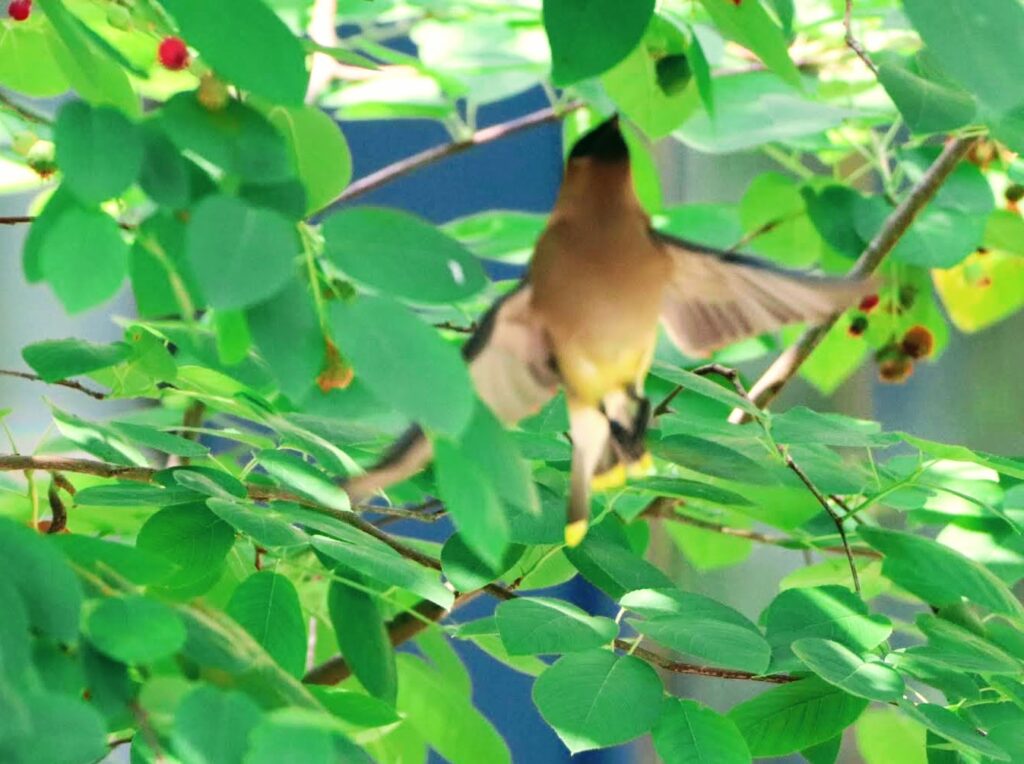
The other thing we love about this delightful tree is that it is the host plant for the Red-Spotted Purple butterfly as well. A favorite of mine for sure, their colors are just beautiful.

Other flowers that are getting ready to fully pop (if they haven’t already) include:
Sweet Bay Magnolia (Magnolia virginiana)
Butterfly Weed (Asclepias tuberosa)
Oak Leaf Hydrangea (Hydrangea quercifolia ‘Alice’)
Elderberry (Sambucus canadensis)

Thanks for reading, and see you in July on the next installment of Soon To Bloom! We will be here…and so will the Cedar Waxwings. Chances are, you often hear them before you see them. To me, their chatter sounds like a bunch of dolphin trainers all blowing their reward whistles all at the same time, after a command had been perfectly performed. See if you can hear their high pitched whistles. Click on the picture below to hear their sounds courtesy of the Macaulay Library and the Cornell Lab of Ornithology.
